Planting freesia in open ground in spring: growing and care
How to believe in yourself and make your dream come true? The exquisite flower of aristocrats - delicate and fragile freesia - will help you with this. The Cape lily of the valley, according to legend, charges with unheard of belligerent strength of spirit and thereby opens the way to victory. Not only that, African iris (another name for freesia) is famous for the divine scent of lily of the valley and a whole palette of natural shades. Fortunately, freesia is an easy-to-grow flower that is great for budding growers. Unlike other bulbs, its flowering is constant, that is, having begun to bloom in July, it will continue to bloom until the very frost.
Take advantage of our tips and tricks for proper outdoor freesia planting, thorough care and cultivation, and you are sure to win!
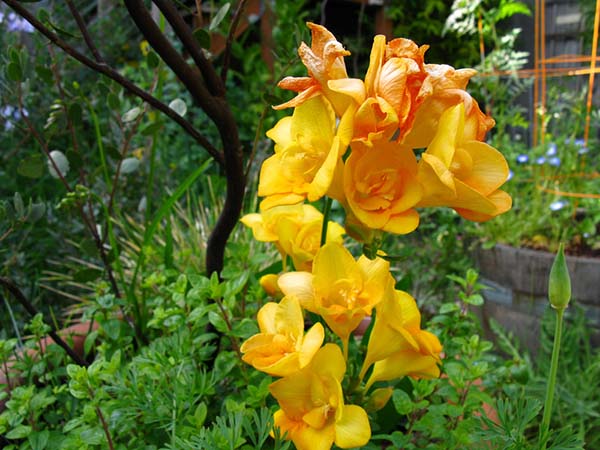
Content
Types and varieties of freesia
The most popular types of freesia are:
- Broken (Alba, fragrant);

- Armstrong (Cardinal);

- Hybrid (Ballerina, Rose Marie, Pimperina).
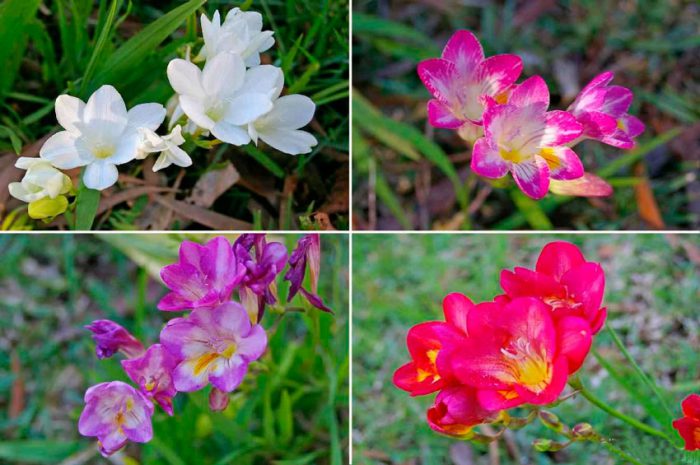
Video: types and varieties of freesia
How to prepare freesia bulbs for planting
You need to plant freesia in open ground at the age of 2 months, therefore, as a rule, in mid-late March, you should take freesia bulbs out of the refrigerator in order to plant them for germination.
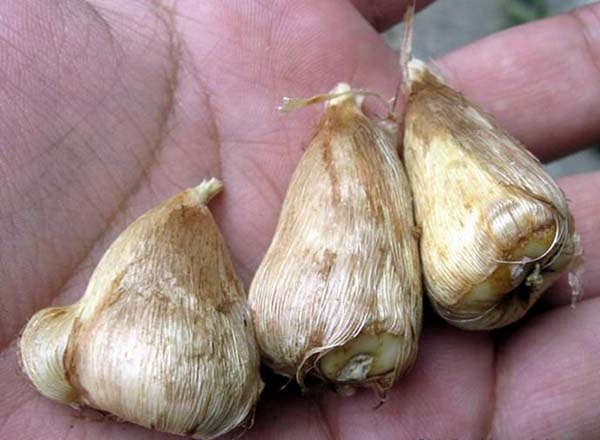
Important! It is advisable to plant all freesia bulbs by April 1.
On the outside, all the bulbs usually look good enough because they are in scales. But when you start peeling them off the scales (except for the tips, you don't need to touch them, only the bottom), then you may find dried specimens that you have to get rid of.

To stimulate the formation of roots, each bulb should be lubricated with aloe juice - this is one of the simplest and most popular ways. Naturally, you can use more effective purchased products, for example, "Kornevin" or "Heteroauxin".
Planting freesia bulbs for germination
You can use the most ordinary plastic cups (0.2 liters) as a landing container. Do not forget to make drainage holes in them.
Advice! If your bulbs are small, then in 1 cup you can plant 2-3 pieces, if large enough, then 1 piece.
The soil for planting must be used loose and airy. You can cook according to the following recipes: take humus, sod and leafy soil in a 1: 1: 1 ratio.
Step-by-step instructions for planting freesia bulbs for germination:
- Perform preparatory procedures with the bulbs.
- Select the appropriate container and soil.
- Fill a glass halfway with earth and pour lightly.
- Place an onion in it.
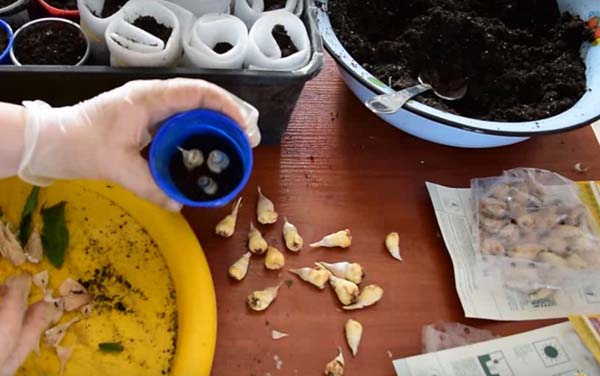
- Cover with earth so that the tip of the sprout sticks out slightly on the surface.
- Place the planting containers on the east or north window, where there will be no direct sunlight, or on the south or west, but be sure to shade.
Video: preparing freesia bulbs and planting them for germination
By the way! If you want to plant freesia babies for germination, then they need to be placed in a fairly deep pot (about 15 centimeters) at a distance of 1-2 cm from each other, depending on the size of the children. In this container, children will grow all summer, and in the fall they should be dug up and stored.
Freesia care after planting for germination
The optimum temperature for sprouting bulbs is + 15-18 degrees. In order to maintain such a low enough temperature on the windowsill, you can use a "screen", for example, from a ceiling tile. It is an effective protection against hot and dry indoor air.

Important! At high temperatures, freesias inevitably stretch out and become thinner. As a result, their peduncle will be weak, and the flowers are small. It is unlikely that such a plant can please the eye.
Gradually, the temperature outside the window will begin to rise, and therefore on the windowsill, which should not be allowed, since the bulbs will begin to build up an excessively large green mass. Therefore, closer to the moment of disembarkation, you should begin to carry out the planting during the day on the veranda or loggia, when the temperature there is set above +10 degrees, and at night, bring it in and return it back to the window.
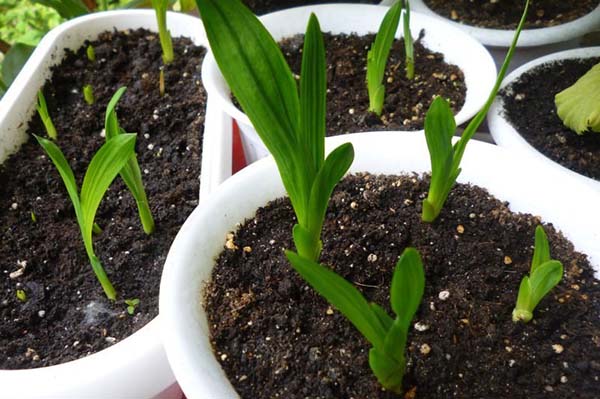
Watering the freesia bulbs planted for germination should be like ordinary seedlings, that is, as the soil dries up.
When the seedlings grow noticeably, then it is worth installing small supports in the pot and tying up the freesia stalks so that it does not break off.
When and how to plant freesia seedlings in open ground
Landing dates
It is difficult to name a specific date for planting freesia in open ground. As a rule, you must look at the weather. The average daily temperature should be noticeably higher than +10 degrees, and the soil should be at least +10 degrees.
The timing may vary depending on the region and climate. So, in the south it can be planted already in April, in the Middle Lane (Moscow region) it is worth waiting for May, in the Urals and Siberia it is most often planted in late May - early June.
By the way! If the seedlings are not yet crowded in the cups, then you can postpone the planting. If it has outgrown, then it is advisable to hurry up and land it in open ground.
In general, freesias are not afraid of frost, but if there is a threat of them, and you live in a rather cold region, then after planting, you should put arcs and cover with foil. Also, the ground near the seedlings can be additionally covered with a black film.
According to the lunar calendar in 2021
Choosing the best date for planting the bulbs can help you Moon calendar.
Important! Planting freesia bulbs in a pot (for germination at home) is also recommended in accordance with the lunar calendar.
So favorable days for the spring planting of freesia bulbs in 2021 according to the lunar calendar are:
- in March - 8-12, 26-31;
- in April - 7, 9-15, 17-22, 27-30;
- in May - 2-6, 9-12, 20, 21, 29-31;
- in June - 7-9, 11-14.
Unfavorable days according to the lunar calendar for 2021 for planting freesia bulbs in spring, the following dates are (days of the Full Moon and New moons, as well as the period when the Moon is in Aquarius, because it is a barren and dry sign -italicized):
- in March -9-10, 13, 28;
- in April -5-6, 12, 27;
- in May -2-4, 11, 26, 30-31;
- in June -10, 24, 26-27.
Place and soil
A place for planting should be chosen so that the site is well protected from winds and drafts, and the sun does not stand over the flower throughout the day. In other words, the flower should be planted in light partial shade.
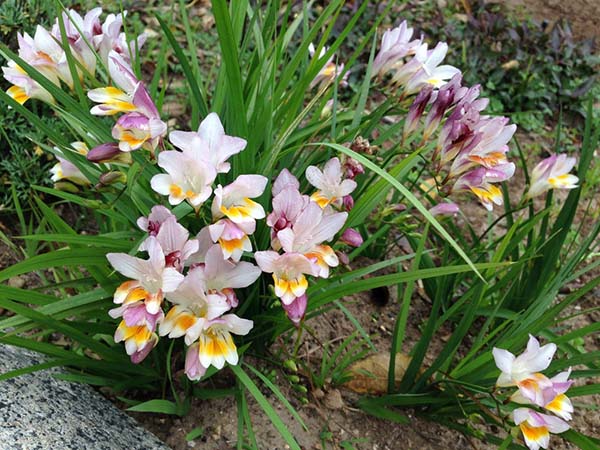
The soil for growing freesia requires sufficiently nutritious, loose and well-drained soil. For example, in a planting hole, you can add seedling soil, humus or mix garden soil with peat 1 to 1. You should also add superphosphate at the rate of 1 teaspoon per 1 seedling and mix thoroughly with the soil.
Landing in open ground
Step-by-step instructions for planting freesia seedlings in open ground:
- Preparing the garden bed.
- Pour (warm) the earth with boiling water to raise its temperature.
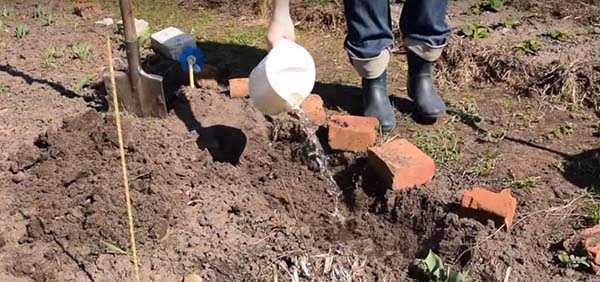
- The depth of the planting hole should be 10-15 centimeters.
- Be sure to pour drainage on the bottom.
- Next, you should fill the bed with fertile soil.
- Spill the planting container well in advance so that the seedling can be easily removed from the pot.
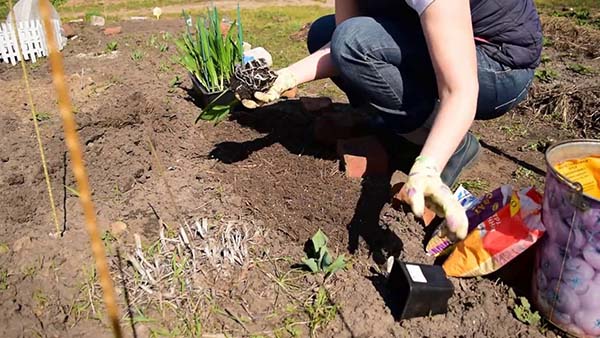
- Plant the plants as close together as possible.
- Be sure to tie the seedlings to small supports.
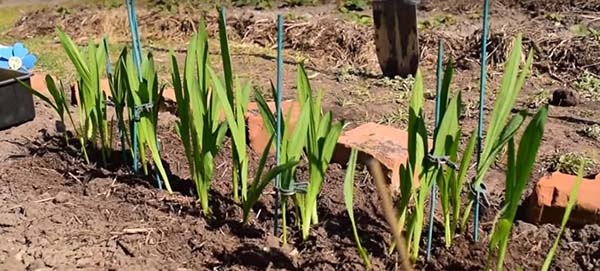
- Spill over the planting with warm water from a watering can.
- Cover the top with compost.
- Place arcs and cover the landings with film or lutrasil. The cover should not be removed for at least 2 weeks.

- If return subzero temperatures are expected, then the ground next to the plantings can be covered with a black film.
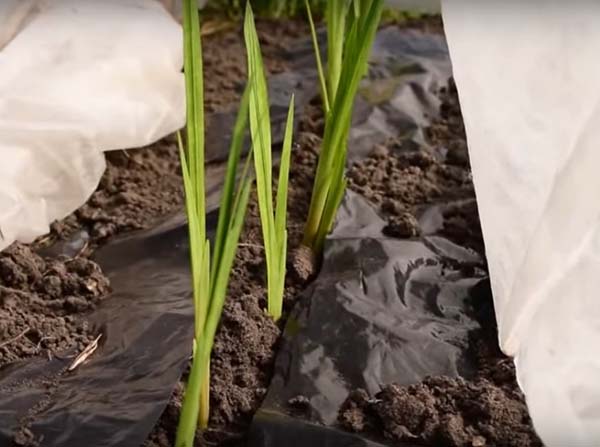
Video: planting freesia in open ground
Outdoor freesia care
After planting and until the very digging of freesia in the fall, its care should include: watering, loosening and weeding the soil from weeds, as well as top dressing.
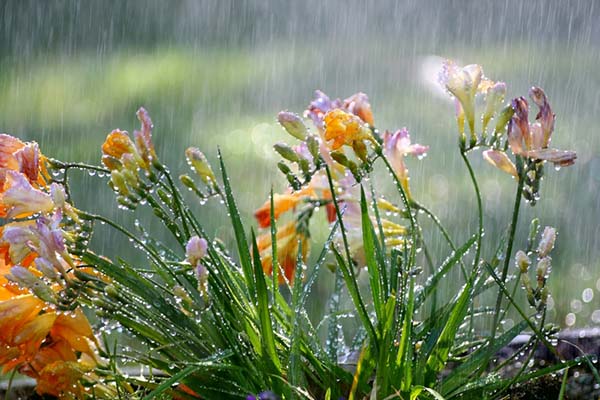
Freesia loves moisture and does not tolerate drought well, so it must be watered every day during the summer. But it is worth understanding that from excessive watering and stagnant moisture, the bulbs can rot, therefore, after heavy rains, it is advisable to loosen the ground next to the flower. After the end of flowering, watering is significantly reduced, and then completely stopped.
As always, before flowering, you can use nitrogen fertilizers to feed freesia, and already during flowering, potassium-phosphorus fertilizers.
Home care when growing in an apartment
If you decide to leave freesia in the apartment and continue growing it at home, then caring for it is almost identical, except that it is advisable to water it before 17-00 pm so that the moisture does not stagnate in the pot at night, in other words, the earth dries up.
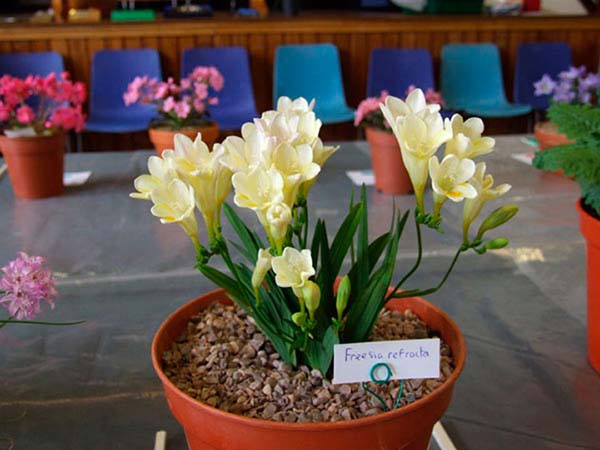
By the way! Freesia responds very well to evening spraying with "fog".
And do not forget to tie it to the supports so that the flower does not break under the weight of the peduncles.

It's worth remembering! Freesia is a light-loving flower, but direct rays should not fall on it, so it should be kept on the eastern or northern windowsill.
As soon as the plant has a dormant period, in other words, it will fade, the amount of watering should be reduced, and then completely stopped.
When to dig out and how to preserve freesia bulbs
In the fall, the bulbs should be dug out, all the leaves should be cut off, then washed, disinfected in a weak solution of potassium permanganate and stored.
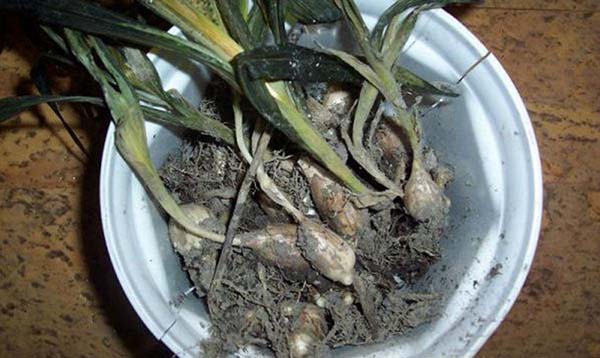
Freesia bulbs are stored just like any other bulbs (like onions or garlic), that is, in a cool, dark and dry place, like in a box or closet.
Video: what to do with freesia after flowering - how to store

